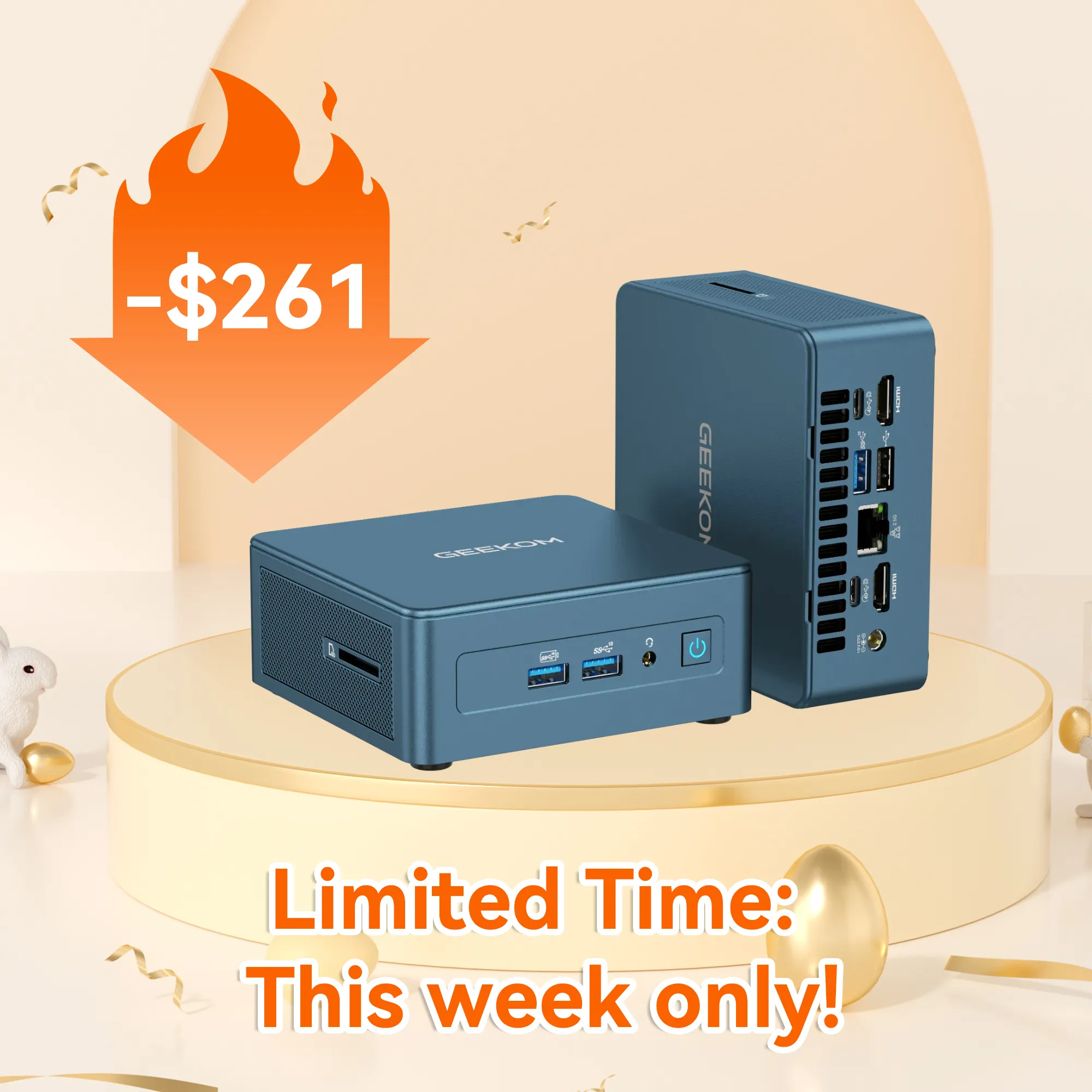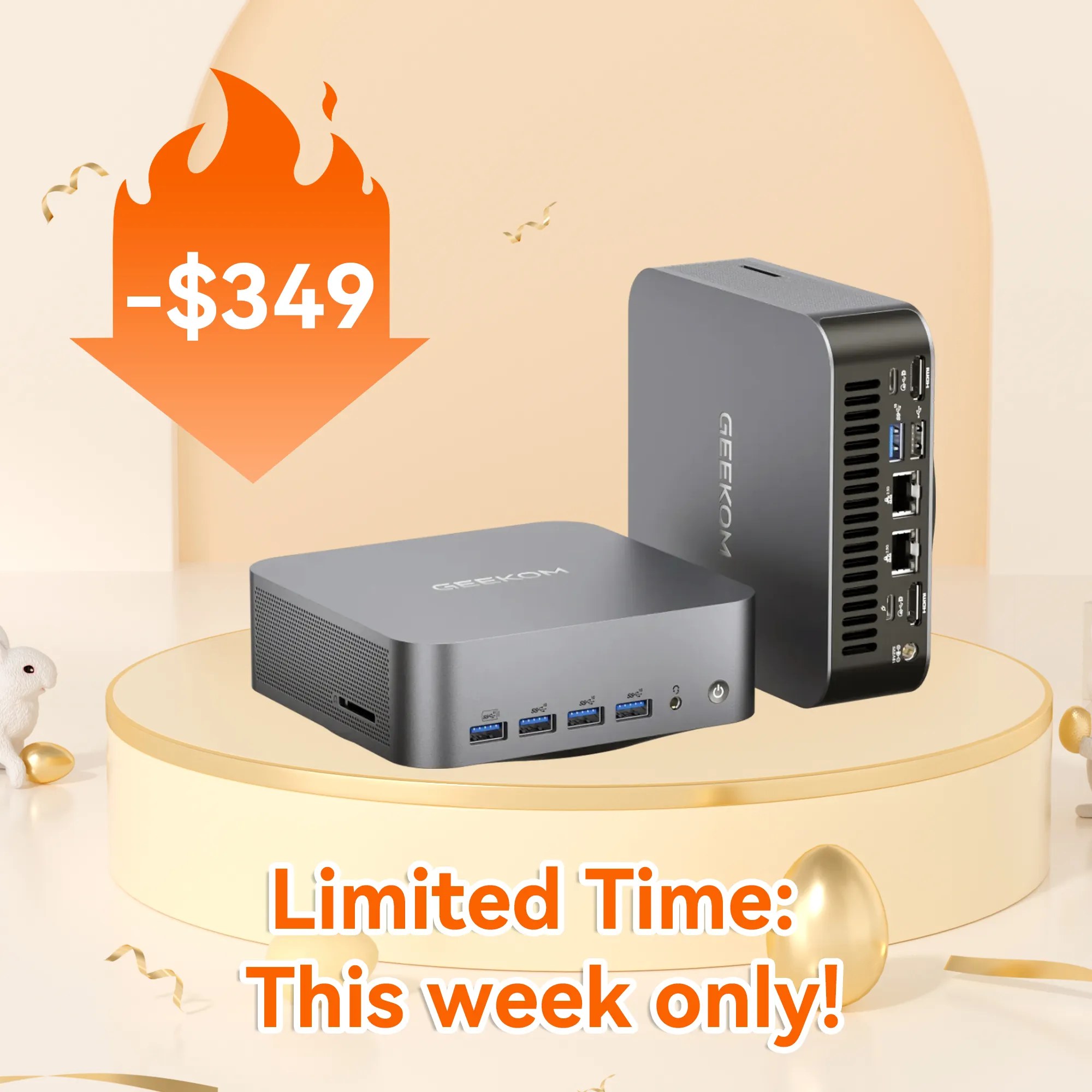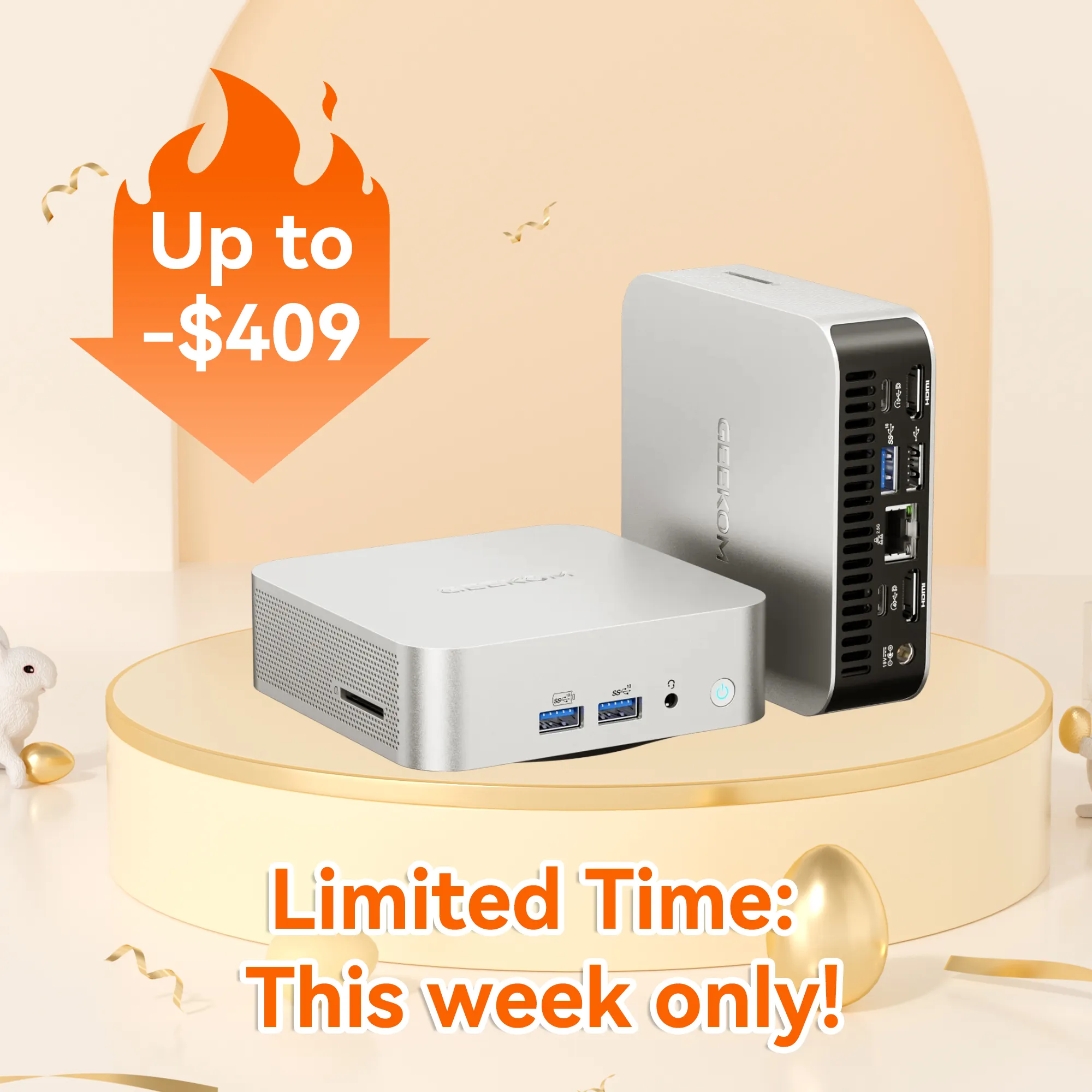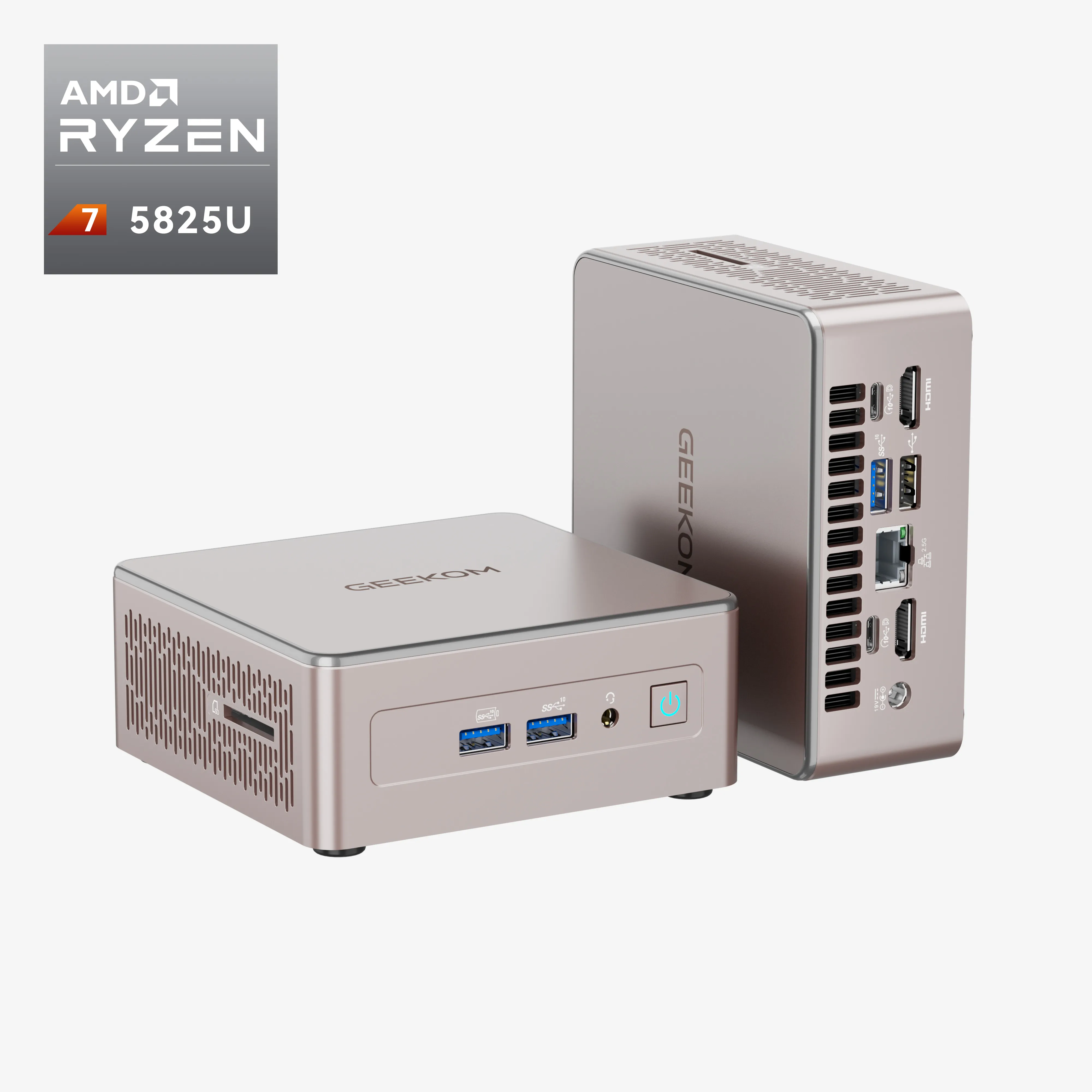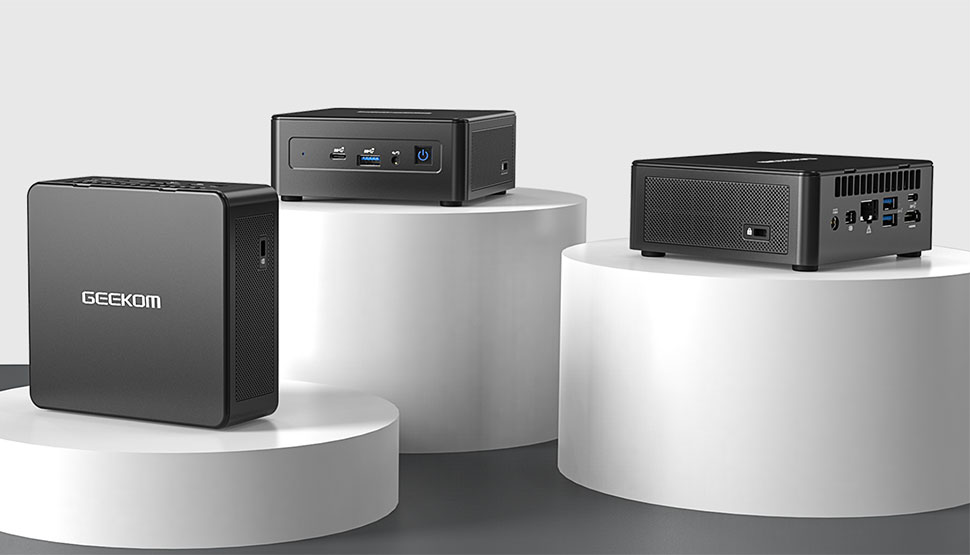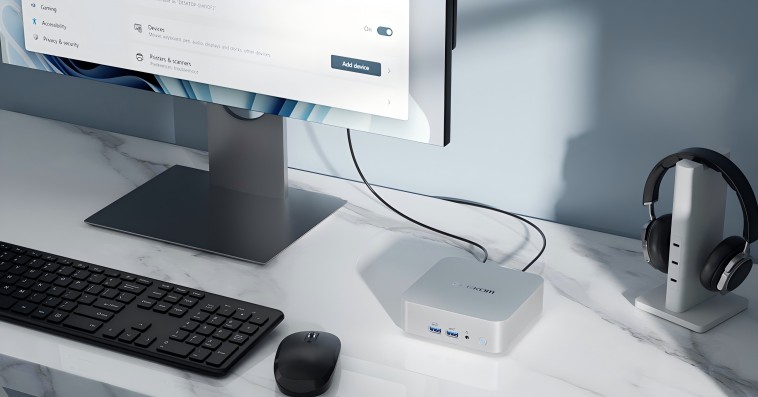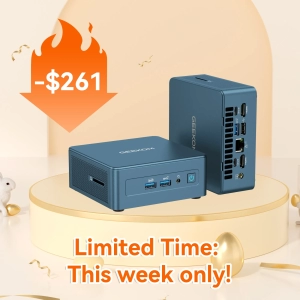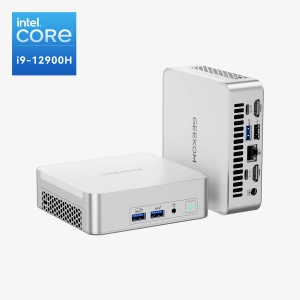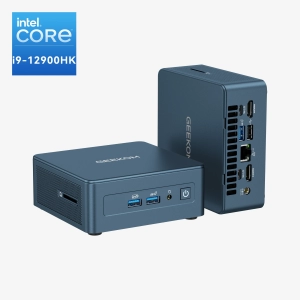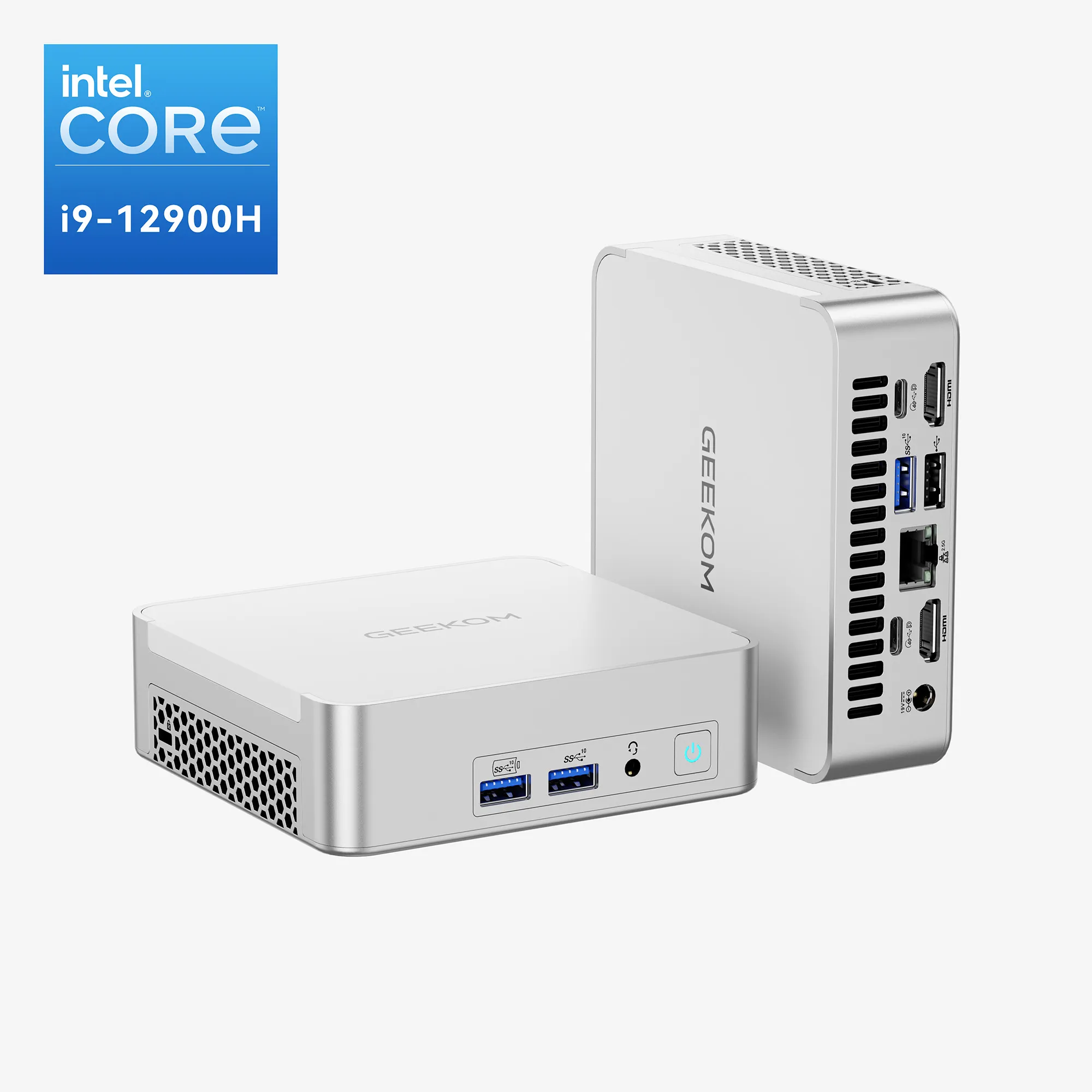Thanks to the fast evolution of mobile computer hardware, mini PCs are becoming increasingly popular. Just like other PC categories, all mini PCs are created differently: they vary by size, configurations, functionalities, and prices, so choosing the best model can be quite a challenge. In this article, we will take a look at the different types of mini PCs and what sets them apart from one another.
Barebone mini PC
Fundamentally speaking, there are only two types of mini PCs: barebone and ready-to-go. The majority of factory-built mini PCs are sold as ready-to-go units, allowing customers to use them right out of the box. However, barebone mini PCs are also popular among tech enthusiasts. They are semi-finished small form factor computers sold without RAM, storage, or operating systems. Consumers have the option of choosing the absent components and installing the operating system themselves.
Unlike building a full desktop tower PC from scratch, the DIY difficulty of turning a barebone mini PC into a complete PC system is a lot lower. Removing a few screws on the bottom panel, inserting the RAM sticks and storage devices into the right slots, installing the operating system from a USB flash drive, and you are ready to go.
With that said, picking the right RAM and SSD can still be tricky for those with little knowledge of computer hardware or no DIY experience. Compatibility issues often occur, some of them may even result in damaging a mini PC’s motherboard. So, if you are not confident enough to do it on your own and can’t get useful help from people with experience, do yourself a favour by getting a ready-to-go unit the right way.
Windows mini PC
According to Statista of June. 2022, Microsoft Windows is still the dominant PC operating system worldwide as of June 2022, with a market share of 76.33%. That is also true in small form factor PCs since most ready-to-go mini computers sold nowadays are shipped with Windows 10 or Windows 11.
Windows is the most popular operating system for mini PCs because of its user-friendly UI, impeccable driver and peripheral compatibility, as well as a wide variety of entertainment and productivity applications. Windows mini PCs are also great for gamers, thanks to features such as Auto HDR with DirectX 12 in the latest Windows build, gaming on a Windows mini PC is more exciting than ever.
Although more than 95% of Windows mini PCs use X86-architecture CPUs, their performances will vary considerably from one another. For example, the GEEKOM Mini IT11, which rocks a beefy Intel Core i7-1195G7 processor, will offer enough horsepower for demanding computing tasks such as 4K video editing and graphics-intensive gaming, while the MeLE Quiter3Q, which employs an entry-level Celeron N5015 CPU, are designed for taking care of basic computing duties.
Apple Mac mini
While there are tutorials for sideloading Apple’s very own macOS on Intel-based mini PCs from other brands, the Apple Mac mini is the only lineup sold with a licensed copy of macOS. The Mac mini used to be positioned by Apple as a mini-computer for casual users, but that marketing strategy changed drastically in 2018, while the lineup made a solid jump towards a more professional audience. With the introduction of the all-mighty Apple M1 chip, the 2020 Mac mini pushed that ideology even further. It is considered by many as the best mini PC to date.
The 2020 Mac mini is an interesting and attractive device. It offers performance on par with an average desktop PC but uses much less power and is almost silent in most use cases. macOS has a wide range of excellent apps for content creators, including Davinci Resolve, Snagit, and Logic Pro. You will probably also find these apps on other operating systems, but few of them are as polished as their macOS versions.
However, the Mac mini is far from being perfect. With RAM and SSD soldered on the motherboard, its hardware is not upgradeable. It can also be a nightmare for gamers, as only a very limited number of modern AAA titles are supported by macOS. If you don’t want to be limited to this, you can buy a Mac mini replacement.
Linux mini PC
The market share of Linux mini PCs has been on the rise in recent years. But the meaning of “Linux mini PCs” can be somewhat confusing, because Linux isn’t a complete operating system, it’s just a kernel. A Linux distribution combines the Linux kernel with other software to create a complete package. There are dozens of Linux distributions out there, the most commonly preinstalled on mini PCs are Ubuntu, Mint, and Debian.
Since most Linux distributions are compatible with both the ARM and the X86 architecture, a Linux mini PC can come in the form factor of a NUC-like small computer, a regular TV box, or a Raspberry Pi-style SBC. Unlike Windows mini PCs, which allow you to use GUI for all the work, Linux mini PCs often require you to enter command lines to perform certain tasks, making them more difficult for beginners to use.
Because of their amazing stability and compatibility, Linux mini PCs are excellent choices for those who plan to build a home server. But if your priority is to create content or play the most visually stunning PC games, you are probably better off with a Windows mini PC.
Chromebox
According to IDC, computers powered by Google’s Chrome OS outsold Apple’s Macs in 2020 and 2021, falling second only to Windows PCs. Not only are Chromebooks growing in popularity, but Chromeboxes are also making an impact in the mini PC market.
ChromeOS is a combination of Linux and Android, making it secure, versatile, stable and easy to use. Even though Chromeboxes can suit many use cases, including document processing, video conferencing, and Android gaming, they are not for everyone. Most Chromeboxes are inexpensive mini PCs with entry-level hardware configurations, so they will struggle with more demanding tasks such as 4K video editing and complex artwork design.
Android mini PC
While Android OS is undoubtedly the dominant smartphone operating system, its role in the mini PC industry is much less significant. We have witnessed quite a few attempts to bring Android to the desktop and beyond, with devices such as the Jide Remix mini and the Azulle Ally leading the way, but they all failed.
Nowadays, Android mini PCs often come in the form factor of open-source SBCs and TV boxes, which can be used for casual duties such as web browsing, media playback, and photo editing. But you won’t want to use them as your primary computer unless your computing needs are very basic.
Verdict
Before buying a mini PC, you need to figure out what your needs are, and how much you are willing to spend. For most consumers, our recommendation will be a ready-to-go Windows mini PC, because it costs less than purchasing a barebone mini PC, RAM sticks, an SSD, and a Windows license separately. Also, most Windows mini PCs are based on the X86 architecture, you can choose to install other operating systems on them. If your Windows mini PC supports two or three storage drives, you are even able to dual-boot or triple-boot different operating systems on a single computer.



